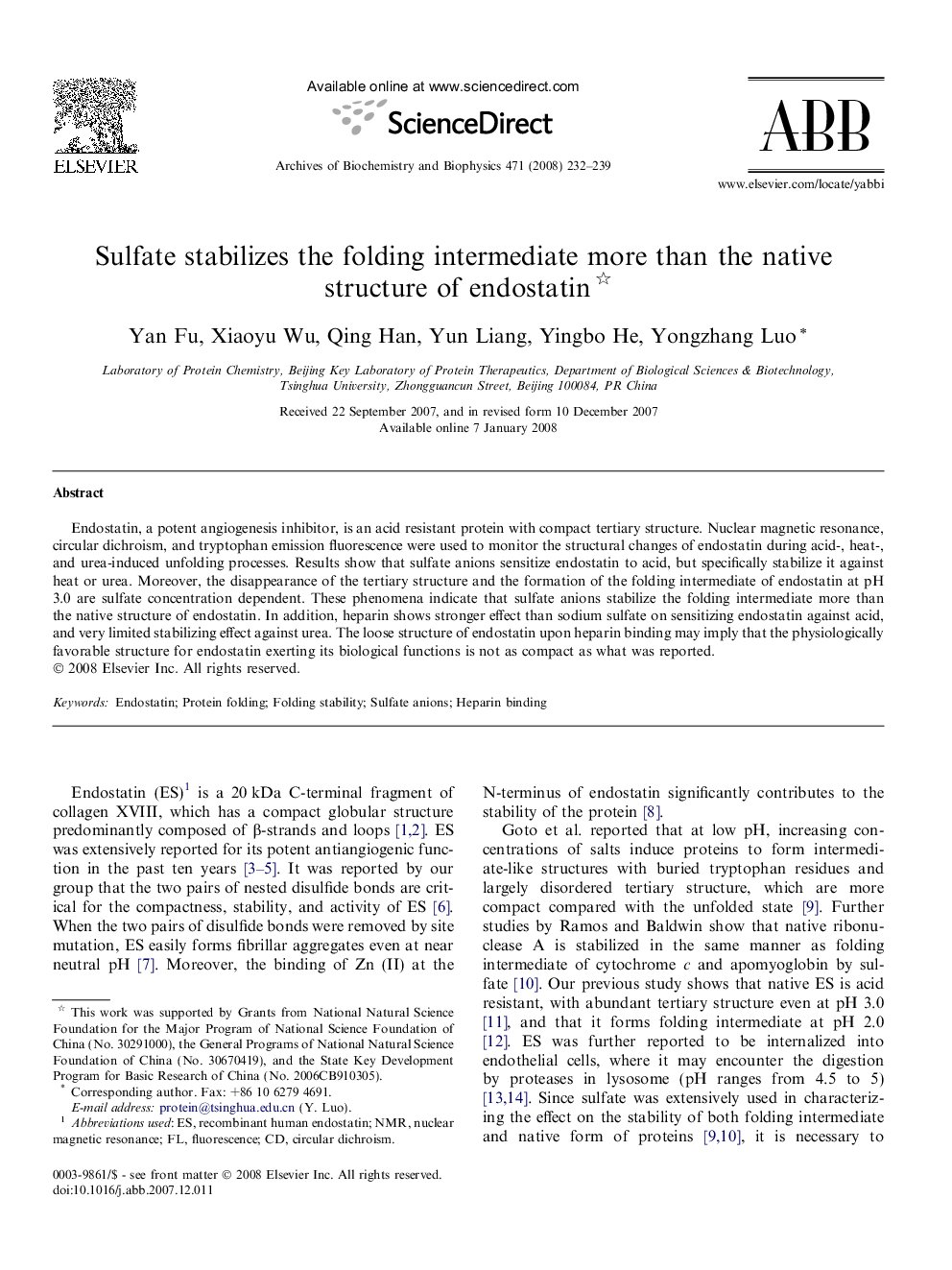| Article ID | Journal | Published Year | Pages | File Type |
|---|---|---|---|---|
| 1926744 | Archives of Biochemistry and Biophysics | 2008 | 8 Pages |
Abstract
Endostatin, a potent angiogenesis inhibitor, is an acid resistant protein with compact tertiary structure. Nuclear magnetic resonance, circular dichroism, and tryptophan emission fluorescence were used to monitor the structural changes of endostatin during acid-, heat-, and urea-induced unfolding processes. Results show that sulfate anions sensitize endostatin to acid, but specifically stabilize it against heat or urea. Moreover, the disappearance of the tertiary structure and the formation of the folding intermediate of endostatin at pH 3.0 are sulfate concentration dependent. These phenomena indicate that sulfate anions stabilize the folding intermediate more than the native structure of endostatin. In addition, heparin shows stronger effect than sodium sulfate on sensitizing endostatin against acid, and very limited stabilizing effect against urea. The loose structure of endostatin upon heparin binding may imply that the physiologically favorable structure for endostatin exerting its biological functions is not as compact as what was reported.
Related Topics
Life Sciences
Biochemistry, Genetics and Molecular Biology
Biochemistry
Authors
Yan Fu, Xiaoyu Wu, Qing Han, Yun Liang, Yingbo He, Yongzhang Luo,
